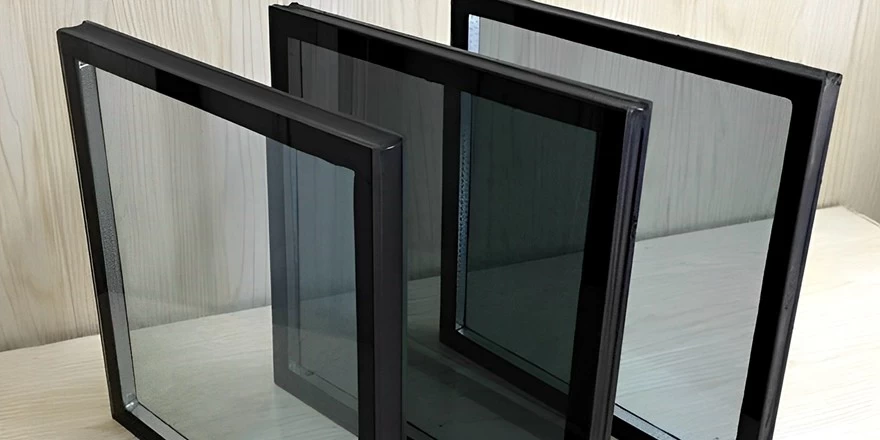What kind of glass is the LOW-E insulating glass used on high-end doors and windows?
1. What is LOW-E glass?
LOW-E glass is low-emissivity glass, which is formed by coating the glass surface and reducing the emissivity E of the glass from 0.84 to below 0.15, it's an energy-saving glass.
2. What are the characteristics of LOW-E glass?
① High infrared reflectivity, can directly reflect far infrared heat radiation.
② The surface emissivity E is low, and the ability to absorb external energy is small, so the heat energy radiated is less.
③The shading coefficient Sc has a wide range, and the amount of solar energy transmitted can be controlled according to the needs to meet the needs of different regions.

3、Why the LOW-E film layer can reflect heat?
The LOW-E film layer is coated with silver, which can reflect more than 98% of far-infrared heat radiation, thus directly reflecting heat like a mirror reflecting light. The shading coefficient Sc of LOW-E can be from 0.2 to 0.7, so that the direct solar radiation energy entering the room can be adjusted according to the needs.
4、What are the main types of mature coated glass processes?
There are two main types of Low E glass: online coating and vacuum magnetron sputtering coating (also called offline coating).
Online coated glass is manufactured on the float glass production line, which has a single variety of glass, poor heat reflectivity and low manufacturing cost. Its film layer is more stable and can be used in a single piece.
Offline-coated glass varieties are wide and colorful, with excellent thermal reflection performance, and obvious energy-saving characteristics. The disadvantage is that the membrane layer is relatively unstable.

5、How does LOW-E glass work in summer and winter respectively?
In winter, the indoor temperature is higher than that of the outdoors, and the far-infrared heat radiation mainly comes from the indoors. The LOW-E glass can reflect it back indoors to keep the indoor heat from escaping. For part of the solar radiation from the outside, LOW-E glass can still allow it to enter the room, and this part of the energy is absorbed by indoor objects and then converted into far-infrared heat radiation and left indoors.
In summer, the outdoor temperature is higher than the indoor temperature, and the far-infrared heat radiation mainly comes from outside. Low-E glass can reflect it to prevent heat from entering the room. For solar radiation from the outside, LOW-E glass with a low shading coefficient can be selected to limit its entry into the room, thereby reducing certain costs (air conditioning costs).

6. What is the function of filling argon in LOW-E insulating glass?
Argon is an inert gas, and its thermal conductivity is worse than that of air, so filling it into the insulating glass can reduce the U value of the insulating glass and increase the heat insulation of the insulating glass. For Low-E insulating glass, argon also has the effect of protecting the Low-E film layer.
7. How much ultraviolet light can be attenuated by LOW-E glass?
Compared with ordinary single-piece transparent glass, LOW-E glass can reduce ultraviolet rays by 25%. Compared with heat-reflective coated glass, LOW-E glass can reduce ultraviolet rays by 14%.

8、On which surface of the insulating glass is the LOW-E film layer located most appropriately?
The insulating glass has 4 surfaces, and the numbers from outdoor to indoor are 1#, 2#, 3#, and 4# surfaces. In areas where the heating demand exceeds the cold demand (northern area), the LOW-E film layer should be on the 3# surface. Conversely, in areas where the cooling demand exceeds the heating demand (south area), the LOW-E film layer should be located on the 2# surface.
9. How long does the LOW-E coating last?
The duration of its coating layer is the same as the duration of the sealing of the insulating glass space layer.





















